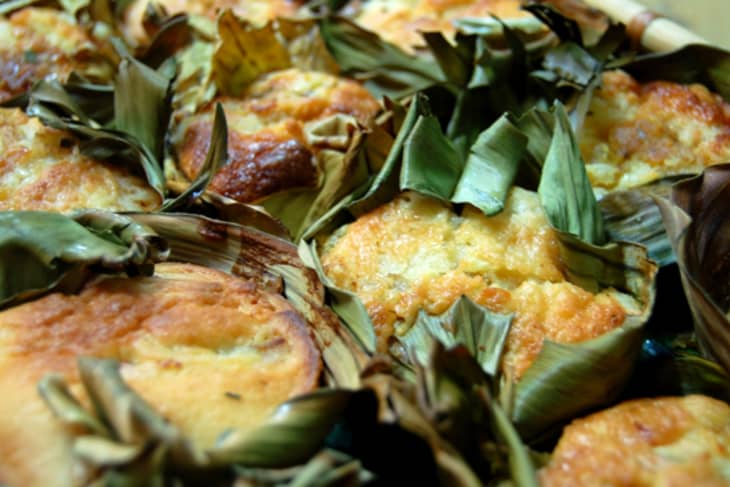All the Cool Things You Can Do With Banana Leaves
Around the world, wherever bananas grow, cooks have devised ways to use the giant leaves, wrapping them around foods both savory and sweet. A parcel made from banana leaves seals in moisture and flavor and infuses the contents with a subtle, grassy aroma. From Latin American to Asian dishes, here are 9 clever and beautiful ways to cook with the versatile leaves.
What Are Banana Leaves?
Banana leaves are simply the giant, waxy leaves the grow on a banana plant. They are harvested for culinary use and for decoration. They’re non-toxic and food-friendly, of course. But people don’t typically eat them.
Where to Find Banana Leaves
Look for banana leaves at Asian markets like H Mart and at Latin American markets. If fresh ones aren’t available, check the frozen food section. Online, they can be found at Weee! and at Mex Grocer.
How to Prep and Store Banana Leaves
Leaves typically come folded in a package. They can be delicate, so unfold gently before using. If frozen, thaw in the package in the refrigerator, first, before opening.
To store, seal in an airtight bag so they stay moist. You can either keep them in the refrigerator for up to a week, or you can freeze them for about six months.
What to Make With Banana Leaves
Steamed Fish
A banana leaf makes a fragrant and convenient fish-steaming packet. Wrap the leaf around any kind of firm-fleshed fish (sustainable, of course!) together with seasonings like fresh herbs, garlic, ginger, or curry paste. See our informal recipe for steamed fish for some tips.
Grilled Fish, Shrimp, or Vegetables
Wrapping shrimp, fish, or vegetables in banana leaf before grilling has a couple of advantages. According to Jaden of the blog Steamy Kitchen, it “prevents the fragile fish from sticking to the grill grates” and secondly, it “adds a mellow smoky, sweet flavor to the fish.”
Custards
Throughout Southeast Asia, cooks make banana leaf “boats” to steam mixtures of meat, spices, coconut milk, and eggs — savory custards. Thai hor mok pla, a fish and coconut milk curry custard, is an example.
Tamales and Pasteles
In tropical regions of Mexico and Central America, tamales are wrapped in banana leaves, which imparts a different flavor than corn husks. Similar to tamales, Caribbean pasteles are frequently enclosed in banana leaves.
Cochinita Pibil
Cochinita pibil is a Mexican dish traditionally consisting of a whole suckling pig roasted in a banana leaf. For a recipe that’s more doable at home, see Andrea Myers’s Slow-Cooked Achiote-Marinated Pork (Cochinita Pibil).
Idli
The South Indian rice and black lentil cakes called idli (also hittu, khottek, or kadubu) are typically steamed in a special pan or in baskets. However, they can be steamed in banana leaves, as Varada demonstrates on her blog, Aayi’s Recipes. Her banana leaf version is easier to assemble.
Bibingkang
Bibingkang, or biko, a Filipino coconut sticky rice cake, is traditionally baked in a pot lined with banana leaves. Panlasang Pinoy’s recipe shows how to adapt this for a cake pan, while this bibingka recipe on Jun-Blog uses ramekins. We’re looking forward to trying one of these methods next time we make our own binbingkang recipe.
Sticky Rice
In Southeast Asia, sticky rice is wrapped and steamed inside banana leaves for a sweet or savory treat. For example, check out Thai & Lao Food’s recipe for Khao Dome (Coconut Sticky Rice in Banana Leaves).
Tableware
Fresh, green banana leaves can be used as plates, serving containers, and table decor. Banana leaf boats would make pretty bowls for steamed rice, salads, desserts and more. Another idea is to fold the leaves into cones to fill with noodles or other foods.
